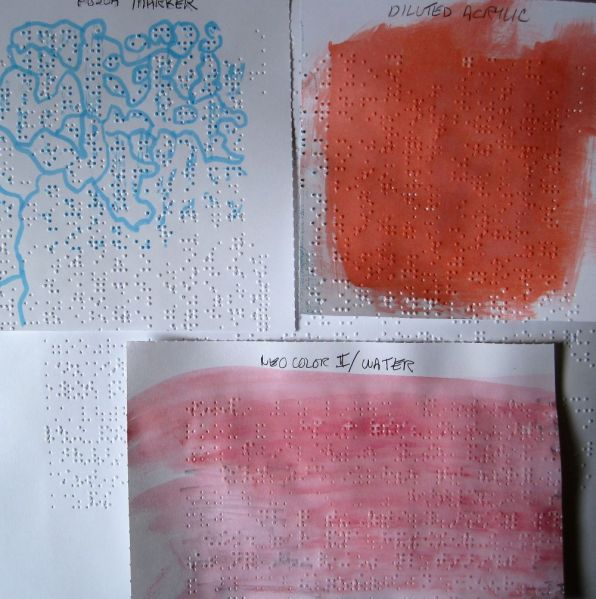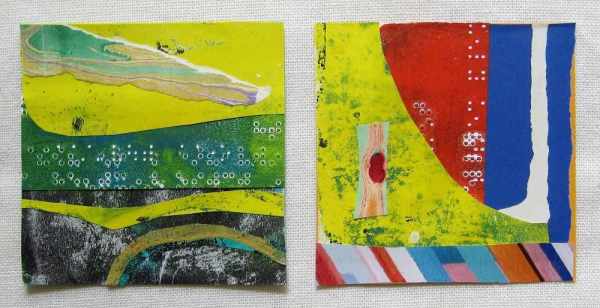When I am given interesting materials I like to play and see what I can do with them. Recently in my volunteer work I came across the first of five volumes of a Braille book. No one knew what happened to the other four, so I got to take that volume home.

The Braille printed pages look like code, with raised dots on both sides of each page. According to the American Foundation for the Blind, “Braille symbols are formed within units of space known as braille cells. A full braille cell consists of six raised dots arranged in two parallel rows each having three dots. The dot positions are identified by numbers from one through six. Sixty-four combinations are possible using one or more of these six dots. A single cell can be used to represent an alphabet letter, number, punctuation mark, or even a whole word.”
I experimented with dry and wet media to see how the crisp, white paper covered with dots took color.


The stamp pad and graphite pencil worked best of the dry media. Cray pas is smeary and the Crayola crayon was too waxy. For the wet media the diluted acrylic orange paint dried quickly so the raised dots remained crisp. I found that the water I applied on the Neocolor II crayon made the dots sink into the paper. The Posca marker (which is acrylic paint) needed to be touched to each raised dot. I tried to create a maze between the dots, but I wasn’t pleased with the results.
I used a bit of the acrylic painted paper in two of my 100 day project four inch collages. The paper certainly adds texture.

Let me know if you think of any other possible uses for this paper. I am willing to try out viable suggestions.
I’m linking to Off The Wall Fridays.

I like the way you incorporated this paper into your collage pieces. What about giving the paper some areas of gel medium (or cheaper Outdoor Mod Podge), letting it dry and then using a wet or dry technique over it. Or fill the backside dots so they remain firm for wet technique. Ideas, not so sure they’re “viable.”
Maybe I could try some artist varnish. I have tried gel printing that made interesting marks.
Good ideas!